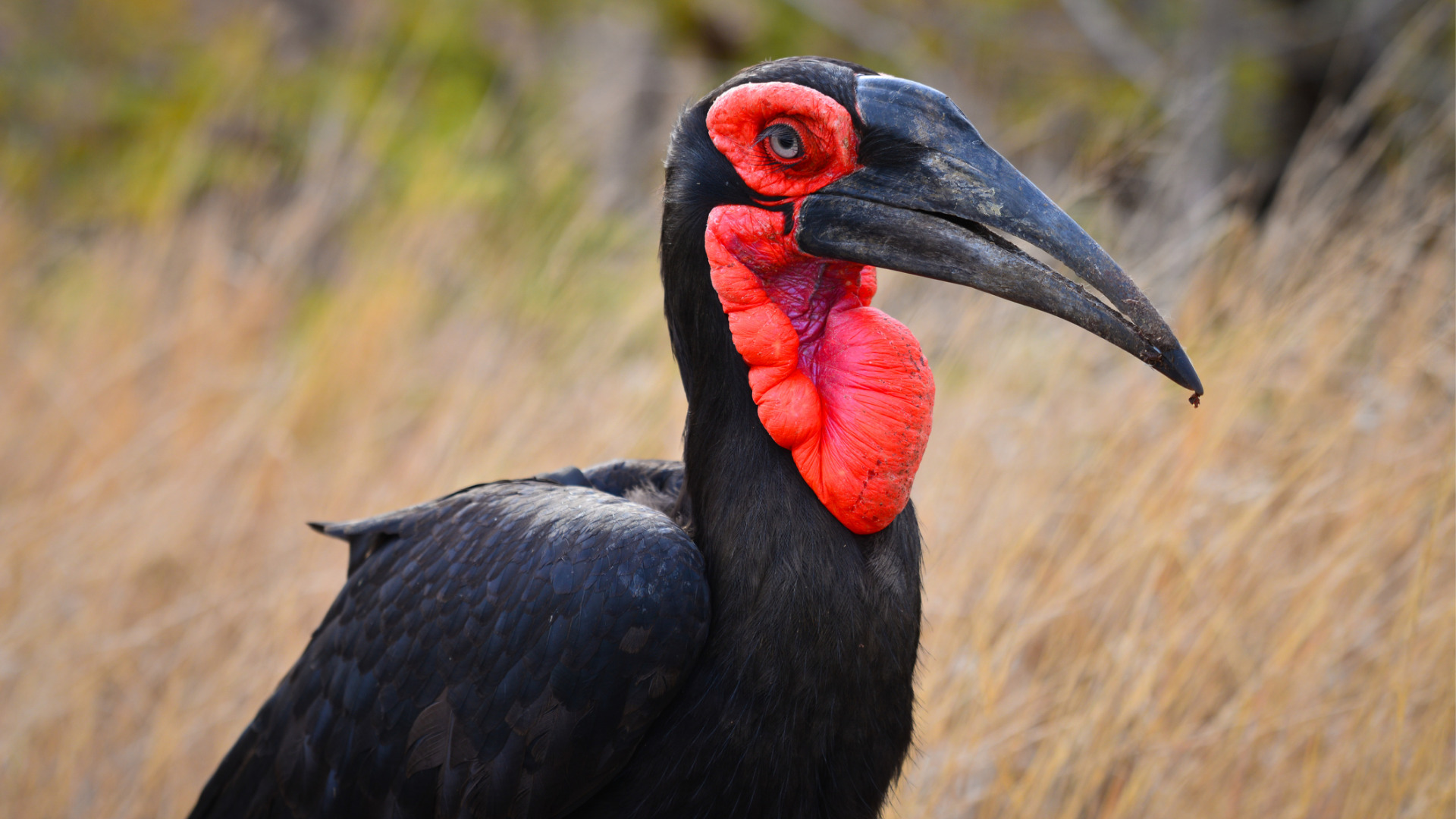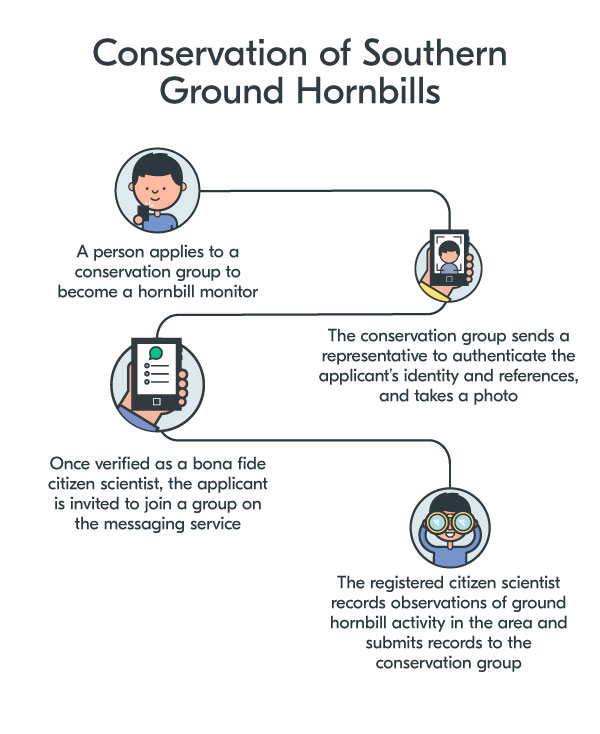
As we go about our social purpose work we regularly get to speak to local, national and international non-profit organisations. Over the years, we’ve found that many struggle to understand the many ways digital identity solutions might help them in their work.
As part of our wider efforts to help the sector make sense of the technology, today we’re publishing the third of six articles looking at the use of digital identities in six different humanitarian and environmental settings.
Please note that, while the technology use-case is real, the scenarios are hypothetical in nature, and the projects do not exist as stated.
Location
Zimbabwe
Scenario
Conservation of southern ground hornbills
Background
Southern ground hornbills (Bucorvus leadbeateri) are large, black hornbills that move around on the ground. Their huge, black bills and bright red facial pouches, along with their considered, slightly comical gait, make them unmistakable in the African savannas and woodlands.
Sadly, population numbers throughout most of their range declined by as much as 50% over the past 30 years. This is attributed largely to loss of habitat as human populations expand into, and cultivate savanna areas.
Ground hornbills roost in trees and use hollow trunks to lay eggs and raise their young. As trees are cleared for agricultural purposes or firewood, the hornbills have nowhere suitable to roost or breed.
In parts of their range, ground hornbills are also hunted for meat and poisoned accidentally by farmers targeting leopards or jackals. Hornbill feathers are sought-after as tribal decorations, and there is a long history of using them or their parts in traditional medicine.
The International Union for Conservation of Nature’s Red List classifies southern ground hornbills as “Vulnerable” to extinction throughout their sub-equatorial range in Africa.
In Zimbabwe, in particular, the government-sponsored ‘Agrarian Land Reform’ policies encourage the development of previously pristine, natural areas, which has put populations of ground hornbills in communal farming areas in jeopardy. Urgent research on population numbers and breeding success is critical in order to inform conservation and management measures.
Challenge
Conservation organisations, such as BirdLife Zimbabwe, are conducting research on ground hornbills that occupy territory and breed in communal lands or newly settled farming areas. A starting point for this research is to monitor population numbers and breeding success each year.
Since it is not practical or financially viable for researchers to follow each family group of hornbills as it moves through its large home territory each day, the participation of local community members is essential to the success of the research.
However, the reporting of ground hornbill sightings and nest locations could attract individuals with nefarious intentions, considering that traditional medicine traders are prepared to buy birds or bird parts for resale to the public.
Should such individuals be inadvertently included in the research community, the effects on populations of these long-lived, slow breeding hornbills may be devastating.
Solution
Community participants who wish to be included in the citizen science network to report and observe ground hornbills would need to have a digital identity that verifies them as bona fide, living and trusted individuals.
This may involve an interview, in person or via an online platform, as well as the registration of the participant’s name, address and facial biometrics. This would enable a participant to join a messaging group, such as WhatsApp, where the sightings and observations are submitted.
Behavioural identifiers could also be included in the digital identity since an individual observer will be submitting records from within a well-defined area (close to their home) each time and this could be used to authenticate the observations.

In South Africa, the Kruger National Park, the South African Bird Atlas Project and the Mabula Ground Hornbill Project have used citizen scientists in a similar way, thereby involving the community and expanding the capacity for data capture.
Read our other scenarios on how digital identity might:
